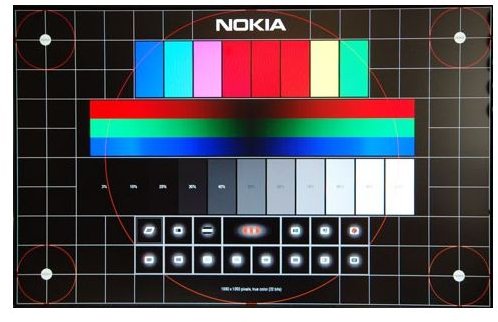HDTV Contrast Ratio - What Is It And Why Is It Important?
1000:1
What do the numbers mean? Contrast ratio is basically a way of describing how bright the white is, compared in ratio to how dark the black is in a particular display system. The higher the first number in the ratio, the brighter the screen and the greater the contrast between black and white. Brightness in HDTV is most often defined as the emitted luminous intensity on screen measured in candela per square metre (cd/m2). Without the existence of one standard measurement system however, often times two systems declaring widely different ratios may produce very similar results. Because of the difference in measurement and unstated variables from manufacturer to manufacturer, it is not easy to compare one rating to another.
Images
Real Room
In marketing, the contrast ratios that are advertised are the optimum ratios as displayed in a totally dark room. In an ideal room, all the light being reflected by your HDTV would be absorbed, with the displayed image being the only visible light in the room. In such a scenario, the contrast ratio of the image would be the same as the contrast ratio of the display device. In a so-called “Real Room” however, some light is reflected back onto the screen, effectively lowering the contrast ratio of the displayed image.
Understand also that the difference between Static Contrast Ratio and Dynamic Contrast Ratio. The ratio of measurement of the brightest and the darkest colors that are capable of being produced simultaneously at any instant of time by the system is called static contrast ratio. The same ratio, with measurements taken over a sample of time is called dynamic contrast ratio. It is common for HDTV manufacturers to only disclose the dynamic ratio, when it is higher than the static ratio. This is why it’s important to not only do your homework, but also to view the TV in a bright room using standard input (as opposed to blu-ray, for example) before buying.
The Bottom Line
In truth, contrast ratio is very important when considering which HDTV is best for you. Employ a certain amount of skepticism over claims of things like 10 million to 1 contrast ratios, as it is unlikely to retain that ratio in a “real room” scenario. Remember that whatever the specifications are may determine some of the factors in how good the picture looks, but every person’s perception is slightly different. HDTVs you see on display in the department store are usually set up to display optimally in a very brightly lit room. Most times, the picture you see in the store and the picture you see at home are not going to be exactly the same, as the variables and conditions have changed. So, be educated, ask questions, and remember…Is this a REAL room?
